-
 Bitcoin
Bitcoin $106,754.6083
1.33% -
 Ethereum
Ethereum $2,625.8249
3.80% -
 Tether USDt
Tether USDt $1.0001
-0.03% -
 XRP
XRP $2.1891
1.67% -
 BNB
BNB $654.5220
0.66% -
 Solana
Solana $156.9428
7.28% -
 USDC
USDC $0.9998
0.00% -
 Dogecoin
Dogecoin $0.1780
1.14% -
 TRON
TRON $0.2706
-0.16% -
 Cardano
Cardano $0.6470
2.77% -
 Hyperliquid
Hyperliquid $44.6467
10.24% -
 Sui
Sui $3.1128
3.86% -
 Bitcoin Cash
Bitcoin Cash $455.7646
3.00% -
 Chainlink
Chainlink $13.6858
4.08% -
 UNUS SED LEO
UNUS SED LEO $9.2682
0.21% -
 Avalanche
Avalanche $19.7433
3.79% -
 Stellar
Stellar $0.2616
1.64% -
 Toncoin
Toncoin $3.0222
2.19% -
 Shiba Inu
Shiba Inu $0.0...01220
1.49% -
 Hedera
Hedera $0.1580
2.75% -
 Litecoin
Litecoin $87.4964
2.29% -
 Polkadot
Polkadot $3.8958
3.05% -
 Ethena USDe
Ethena USDe $1.0000
-0.04% -
 Monero
Monero $317.2263
0.26% -
 Bitget Token
Bitget Token $4.5985
1.68% -
 Dai
Dai $0.9999
0.00% -
 Pepe
Pepe $0.0...01140
2.44% -
 Uniswap
Uniswap $7.6065
5.29% -
 Pi
Pi $0.6042
-2.00% -
 Aave
Aave $289.6343
6.02%
How to use the API of OKX Exchange?
OKX's API offers programmatic access for automated trading & data retrieval, requiring secure API keys with defined access levels. Understanding endpoints, rate limits, and thorough testing (ideally in a sandbox) are crucial for safe and effective use.
Mar 12, 2025 at 11:20 pm
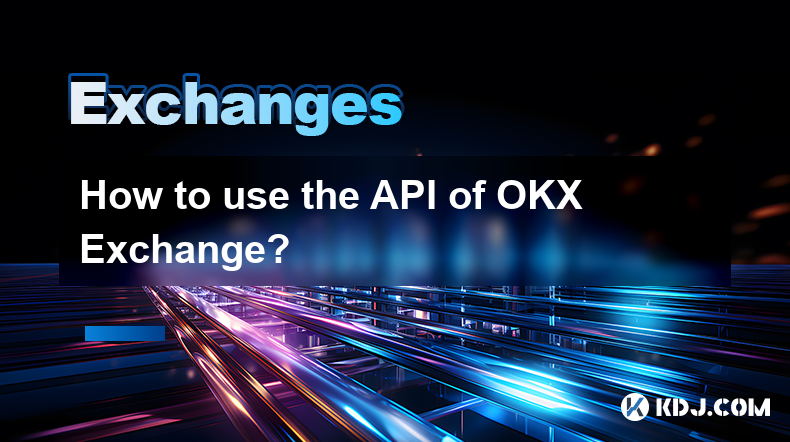
Key Points:
- OKX's API offers programmatic access to exchange functionalities, enabling automated trading and data retrieval.
- Authentication is crucial, requiring API keys and secret keys generated within the OKX platform. Different levels of access can be granted.
- The API supports various endpoints for trading, market data, and account management. Understanding these endpoints is key to effective usage.
- Rate limits exist to prevent abuse; exceeding these can result in temporary or permanent account suspension.
- Testing and debugging are essential before deploying any automated trading strategies using the OKX API. Use of a sandbox environment is highly recommended.
How to Use the API of OKX Exchange?
OKX's API provides developers with programmatic access to a wide range of functionalities offered by the exchange. This allows for the creation of automated trading bots, custom trading dashboards, and sophisticated data analysis tools. However, effectively utilizing the API requires understanding its structure, authentication methods, and rate limits.
Authentication and API Key Generation:
Before you can begin using the OKX API, you must generate API keys and a secret key within your OKX account. Navigate to your account settings, locate the API section, and follow the instructions to generate these keys. Treat these keys like passwords; never share them with anyone. OKX allows you to specify different permission levels for your API keys, allowing you to control the access granted. This is crucial for security. Only grant the minimum necessary permissions to each key.
Understanding API Endpoints:
The OKX API employs a RESTful architecture, meaning data is accessed through various endpoints. These endpoints represent specific functions, such as placing orders, retrieving market data (like order books and trade history), managing your account balances, and withdrawing funds. The API documentation provides a comprehensive list of these endpoints, along with detailed descriptions of their parameters and responses. Thoroughly review this documentation before attempting to use any endpoints.
Making API Calls:
Once authenticated and familiar with the relevant endpoints, you can begin making API calls. This typically involves sending HTTP requests (GET, POST, DELETE, etc.) to the specified endpoints with the necessary parameters. These parameters might include order details (e.g., instrument, quantity, price), account information, or timestamps. The response from the server will usually be in JSON format, containing the requested data or an error message. Libraries for various programming languages (Python, JavaScript, etc.) can significantly simplify the process of making these calls.
Rate Limits and Error Handling:
OKX, like most exchanges, imposes rate limits on API requests. These limits are designed to prevent abuse and ensure fair access for all users. Exceeding these limits will typically result in temporary restrictions on your API access. The OKX API documentation clearly outlines these limits. Your application should be designed to handle rate limits gracefully, perhaps by implementing exponential backoff strategies. Robust error handling is also crucial; your application should gracefully handle network errors, invalid requests, and API-specific error codes.
Testing and Debugging:
Before deploying any automated trading strategies based on the OKX API, thorough testing is essential. Begin with small-scale tests in a controlled environment, perhaps using a simulated trading account or a sandbox if provided by OKX. This allows you to identify and fix bugs without risking real funds. Utilize debugging tools to monitor API calls, responses, and error messages. Careful testing and debugging can save you from significant losses and frustration.
Working with WebSockets:
OKX's API also offers WebSocket functionality for real-time data streaming. This is particularly useful for high-frequency trading strategies that require immediate updates on market conditions. Connecting to the WebSocket endpoint allows your application to receive continuous updates on order books, trades, and other market events. However, working with WebSockets requires a different approach than REST API calls and needs careful handling of connection management and data parsing.
Using Third-Party Libraries:
Many third-party libraries are available to simplify interacting with the OKX API. These libraries handle authentication, request management, and data parsing, making development faster and more efficient. When choosing a library, consider factors such as community support, ease of use, and the specific features it offers. Always check the library's documentation for the latest updates and best practices.
Security Best Practices:
Remember, your API keys provide direct access to your OKX account. Never share your keys with anyone, and store them securely. Use strong, unique passwords and enable two-factor authentication (2FA) on your OKX account for an extra layer of security. Regularly review your API key permissions and revoke access to any keys that are no longer needed.
Frequently Asked Questions:
Q: What programming languages are supported by the OKX API?
A: The OKX API is generally language-agnostic, meaning you can use any language capable of making HTTP requests. However, various community-developed libraries exist for popular languages like Python, JavaScript, and others, simplifying development.
Q: Are there any limitations on the number of API calls I can make?
A: Yes, OKX imposes rate limits on API requests to prevent abuse and ensure fair access. These limits vary depending on the endpoint and your account type. Check the OKX API documentation for details on the specific rate limits.
Q: What happens if I exceed the API rate limits?
A: Exceeding the rate limits will likely result in temporary or permanent restrictions on your API access. The severity of the penalty depends on the extent of the violation. It's crucial to design your application to respect these limits.
Q: How can I test my API code without risking real funds?
A: It's highly recommended to thoroughly test your code in a simulated environment before using it with real funds. Use a testnet or sandbox environment if offered by OKX, or create a separate account for testing purposes.
Q: Where can I find the official OKX API documentation?
A: The official OKX API documentation should be available on the OKX website. Look for a developer or API section. This documentation will provide detailed information about endpoints, parameters, and rate limits.
Disclaimer:info@kdj.com
The information provided is not trading advice. kdj.com does not assume any responsibility for any investments made based on the information provided in this article. Cryptocurrencies are highly volatile and it is highly recommended that you invest with caution after thorough research!
If you believe that the content used on this website infringes your copyright, please contact us immediately (info@kdj.com) and we will delete it promptly.
- 2025-W Uncirculated American Gold Eagle and Dr. Vera Rubin Quarter Mark New Products
- 2025-06-13 06:25:13
- Ruvi AI (RVU) Leverages Blockchain and Artificial Intelligence to Disrupt Marketing, Entertainment, and Finance
- 2025-06-13 07:05:12
- H100 Group AB Raises 101 Million SEK (Approximately $10.6 Million) to Bolster Bitcoin Reserves
- 2025-06-13 06:25:13
- Galaxy Digital CEO Mike Novogratz Says Bitcoin Will Replace Gold and Go to $1,000,000
- 2025-06-13 06:45:13
- Trust Wallet Token (TWT) Price Drops 5.7% as RWA Integration Plans Ignite Excitement
- 2025-06-13 06:45:13
- Ethereum (ETH) Is in the Second Phase of a Three-Stage Market Cycle
- 2025-06-13 07:25:13
Related knowledge
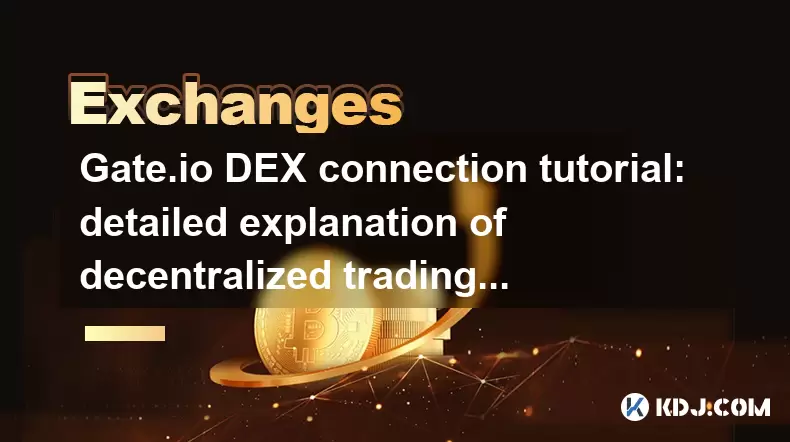
Gate.io DEX connection tutorial: detailed explanation of decentralized trading operation steps
Jun 12,2025 at 08:04pm
Connecting to Gate.io DEX: Understanding the BasicsBefore diving into the operational steps, it is crucial to understand what Gate.io DEX is and how it differs from centralized exchanges. Unlike traditional platforms where a central authority manages user funds and trades, Gate.io DEX operates on blockchain technology, allowing users to trade directly f...
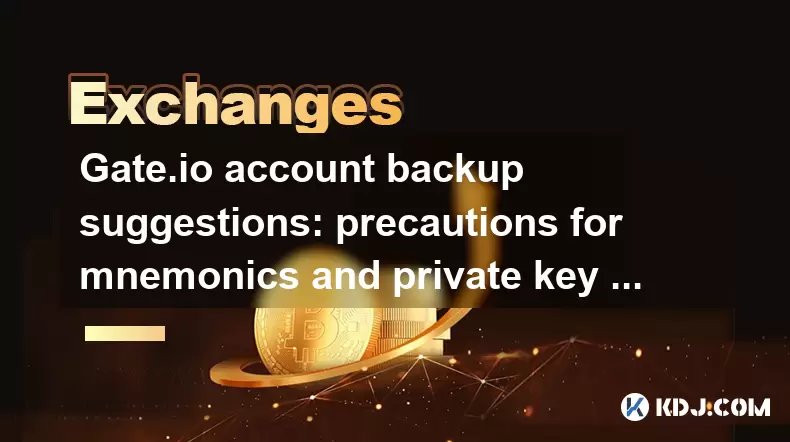
Gate.io account backup suggestions: precautions for mnemonics and private key storage
Jun 12,2025 at 10:56am
Understanding the Importance of Mnemonics and Private KeysIn the world of cryptocurrency, mnemonics and private keys are the core elements that grant users ownership over their digital assets. When using Gate.io or any other crypto exchange, understanding how to securely manage these components is crucial. A mnemonic phrase typically consists of 12 or 2...
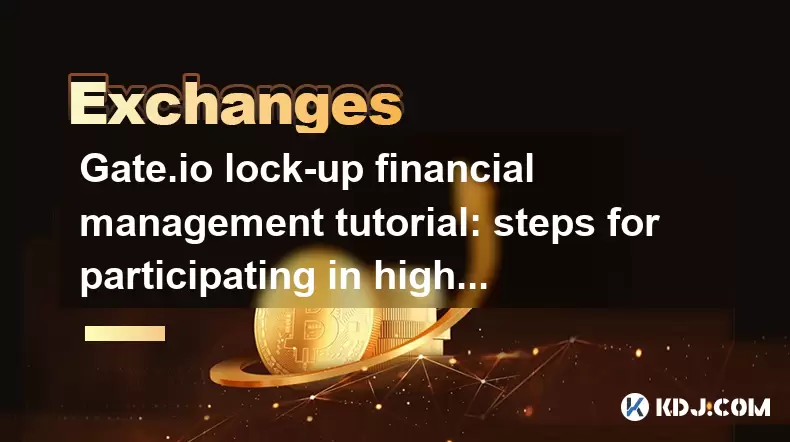
Gate.io lock-up financial management tutorial: steps for participating in high-yield projects and redemption
Jun 13,2025 at 12:43am
What Is Gate.io Lock-Up Financial Management?Gate.io is one of the world’s leading cryptocurrency exchanges, offering users a variety of financial products. Lock-up financial management refers to a type of investment product where users deposit their digital assets for a fixed period in exchange for interest or yield. These products are designed to prov...
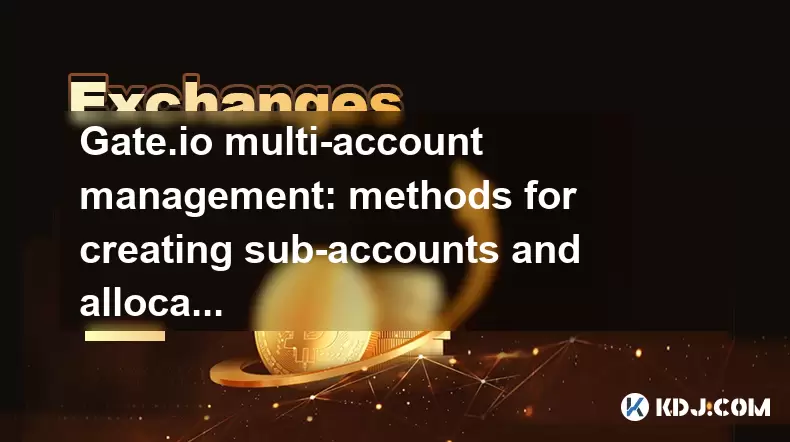
Gate.io multi-account management: methods for creating sub-accounts and allocating permissions
Jun 15,2025 at 03:42am
Creating Sub-Accounts on Gate.ioGate.io provides users with a robust multi-account management system that allows for the creation of sub-accounts under a main account. This feature is particularly useful for traders managing multiple portfolios or teams handling shared funds. To create a sub-account, log in to your Gate.io account and navigate to the 'S...
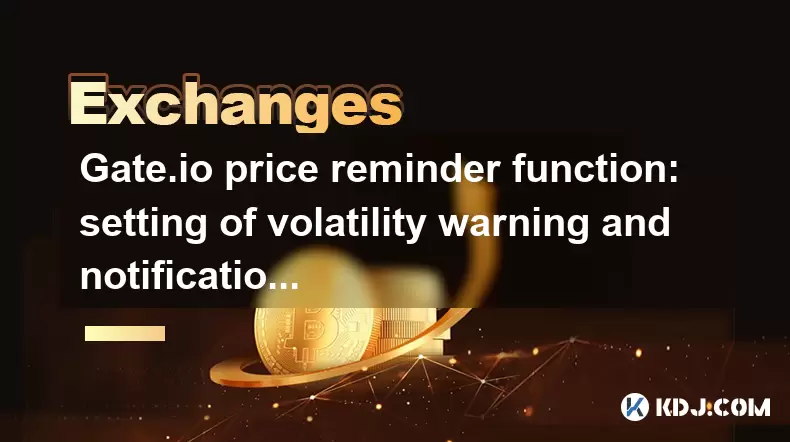
Gate.io price reminder function: setting of volatility warning and notification method
Jun 14,2025 at 06:35pm
What is the Gate.io Price Reminder Function?The Gate.io price reminder function allows users to set up custom price alerts for specific cryptocurrencies. This feature enables traders and investors to stay informed about significant price changes without constantly monitoring market data. Whether you're tracking a potential buy or sell opportunity, the p...

Gate.io trading pair management: tutorials on adding and deleting watchlists
Jun 16,2025 at 05:42am
What Is a Watchlist on Gate.io?A watchlist on Gate.io is a customizable feature that allows traders to monitor specific trading pairs without actively engaging in trades. This tool is particularly useful for users who want to track the performance of certain cryptocurrencies or trading pairs, such as BTC/USDT or ETH/BTC. By organizing frequently watched...

Gate.io DEX connection tutorial: detailed explanation of decentralized trading operation steps
Jun 12,2025 at 08:04pm
Connecting to Gate.io DEX: Understanding the BasicsBefore diving into the operational steps, it is crucial to understand what Gate.io DEX is and how it differs from centralized exchanges. Unlike traditional platforms where a central authority manages user funds and trades, Gate.io DEX operates on blockchain technology, allowing users to trade directly f...

Gate.io account backup suggestions: precautions for mnemonics and private key storage
Jun 12,2025 at 10:56am
Understanding the Importance of Mnemonics and Private KeysIn the world of cryptocurrency, mnemonics and private keys are the core elements that grant users ownership over their digital assets. When using Gate.io or any other crypto exchange, understanding how to securely manage these components is crucial. A mnemonic phrase typically consists of 12 or 2...

Gate.io lock-up financial management tutorial: steps for participating in high-yield projects and redemption
Jun 13,2025 at 12:43am
What Is Gate.io Lock-Up Financial Management?Gate.io is one of the world’s leading cryptocurrency exchanges, offering users a variety of financial products. Lock-up financial management refers to a type of investment product where users deposit their digital assets for a fixed period in exchange for interest or yield. These products are designed to prov...

Gate.io multi-account management: methods for creating sub-accounts and allocating permissions
Jun 15,2025 at 03:42am
Creating Sub-Accounts on Gate.ioGate.io provides users with a robust multi-account management system that allows for the creation of sub-accounts under a main account. This feature is particularly useful for traders managing multiple portfolios or teams handling shared funds. To create a sub-account, log in to your Gate.io account and navigate to the 'S...

Gate.io price reminder function: setting of volatility warning and notification method
Jun 14,2025 at 06:35pm
What is the Gate.io Price Reminder Function?The Gate.io price reminder function allows users to set up custom price alerts for specific cryptocurrencies. This feature enables traders and investors to stay informed about significant price changes without constantly monitoring market data. Whether you're tracking a potential buy or sell opportunity, the p...

Gate.io trading pair management: tutorials on adding and deleting watchlists
Jun 16,2025 at 05:42am
What Is a Watchlist on Gate.io?A watchlist on Gate.io is a customizable feature that allows traders to monitor specific trading pairs without actively engaging in trades. This tool is particularly useful for users who want to track the performance of certain cryptocurrencies or trading pairs, such as BTC/USDT or ETH/BTC. By organizing frequently watched...
See all articles

























































































